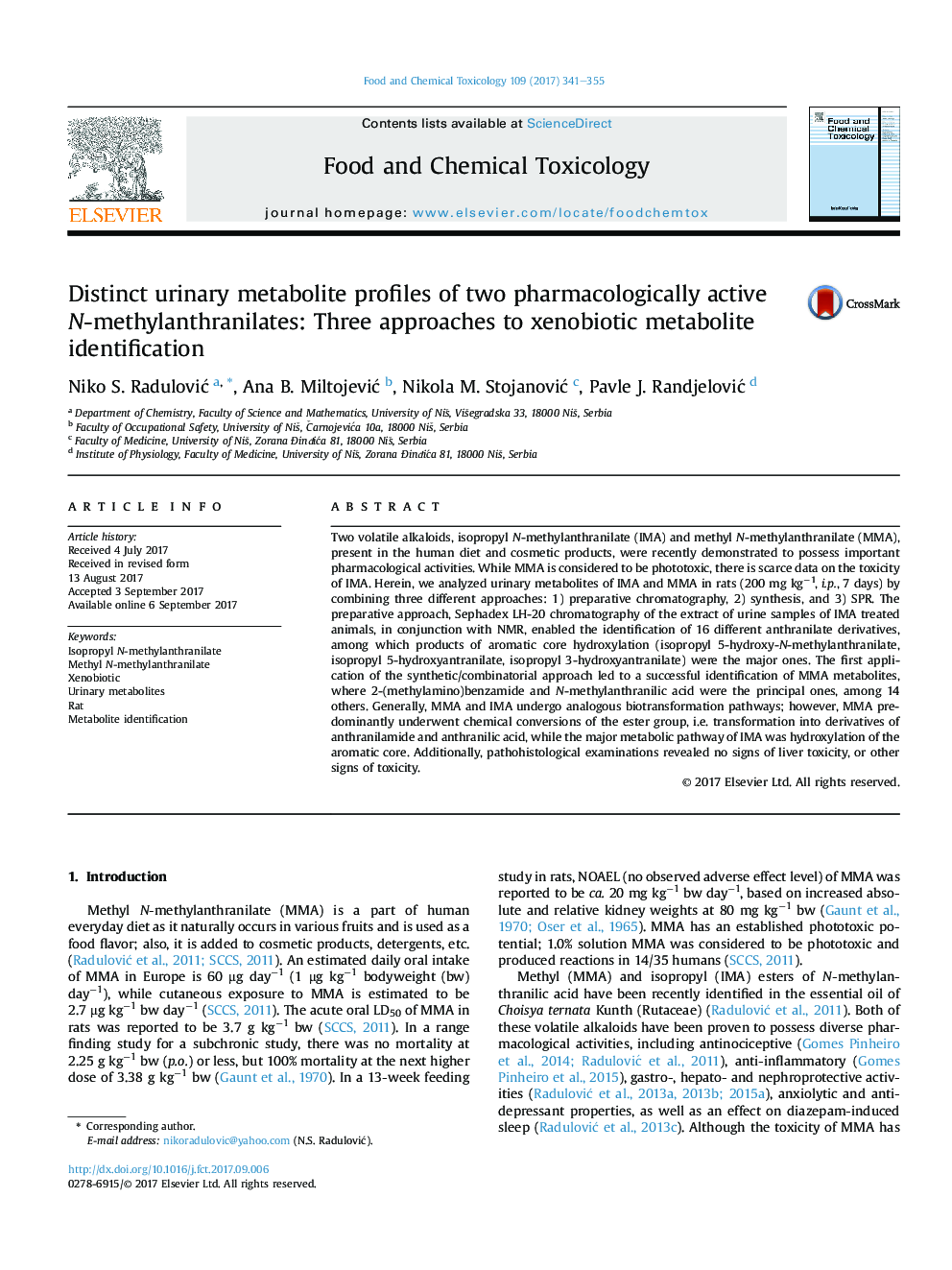| کد مقاله | کد نشریه | سال انتشار | مقاله انگلیسی | نسخه تمام متن |
|---|---|---|---|---|
| 5559975 | 1403305 | 2017 | 15 صفحه PDF | دانلود رایگان |

- Metabolism and hepatotoxicity of two pharmacologically active N-methylanthranilates were investigated.
- Urinary metabolites of the anthranilates, in rats, were analyzed by 3 approaches: preparative, synthetic and combinatorial.
- Aromatic core hydroxylation was the principal metabolic pathway of isopropyl N-methylanthranilate.
- Products of ester group transformation into an amide or acid were the major metabolites of methyl N-methylanthranilate.
- The novel combination of the identification approaches allows implementation of the 3R-strategy in metabolite analysis.
Two volatile alkaloids, isopropyl N-methylanthranilate (IMA) and methyl N-methylanthranilate (MMA), present in the human diet and cosmetic products, were recently demonstrated to possess important pharmacological activities. While MMA is considered to be phototoxic, there is scarce data on the toxicity of IMA. Herein, we analyzed urinary metabolites of IMA and MMA in rats (200 mg kgâ1, i.p., 7 days) by combining three different approaches: 1) preparative chromatography, 2) synthesis, and 3) SPR. The preparative approach, Sephadex LH-20 chromatography of the extract of urine samples of IMA treated animals, in conjunction with NMR, enabled the identification of 16 different anthranilate derivatives, among which products of aromatic core hydroxylation (isopropyl 5-hydroxy-N-methylanthranilate, isopropyl 5-hydroxyantranilate, isopropyl 3-hydroxyantranilate) were the major ones. The first application of the synthetic/combinatorial approach led to a successful identification of MMA metabolites, where 2-(methylamino)benzamide and N-methylanthranilic acid were the principal ones, among 14 others. Generally, MMA and IMA undergo analogous biotransformation pathways; however, MMA predominantly underwent chemical conversions of the ester group, i.e. transformation into derivatives of anthranilamide and anthranilic acid, while the major metabolic pathway of IMA was hydroxylation of the aromatic core. Additionally, pathohistological examinations revealed no signs of liver toxicity, or other signs of toxicity.
276
Journal: Food and Chemical Toxicology - Volume 109, Part 1, November 2017, Pages 341-355